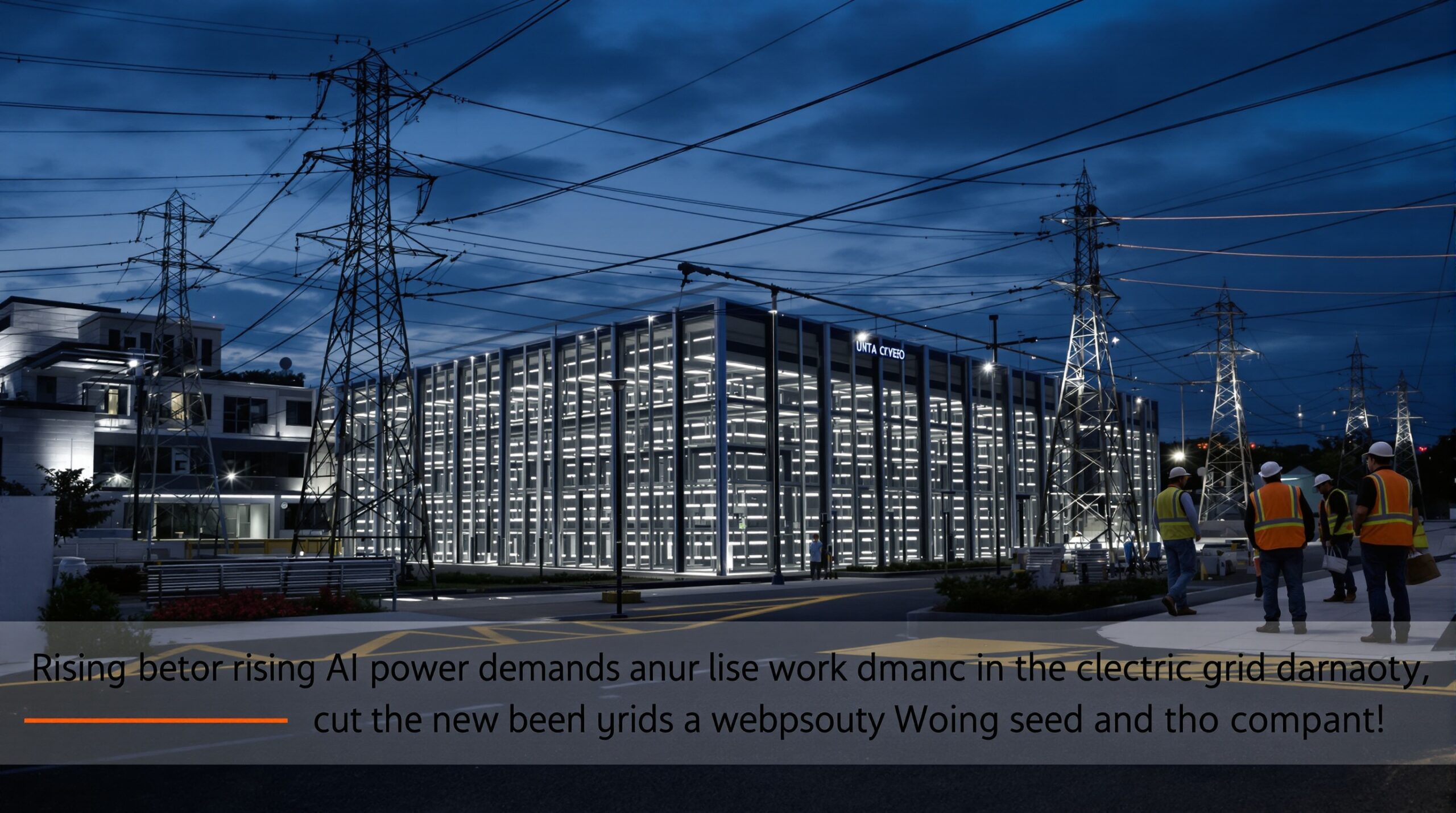Electric grid operators are sounding the alarm about a growing challenge. As artificial intelligence (AI) becomes mainstream, its energy needs are rising rapidly. Data centers, which drive much of AI’s progress, require enormous and consistent power. This surge in demand now threatens to strain utility grids in ways not seen before.
AI Data Centers and Their Massive Power Needs
Modern data centers are the backbone of today’s digital infrastructure. They house high-performance servers that process, store, and transmit vast amounts of data continuously. With the advent of advanced AI models, these facilities have begun using next-generation chips like graphics processing units (GPUs). These chips, designed for speedy computation, consume much more electricity than traditional processors.
A single AI training task can use as much power as dozens of homes consume in a day. Scaling this up across multiple projects and locations results in a staggering collective energy load. Analysts estimate data centers could account for 8% of total US electricity usage by 2030 if demand continues to rise at its current pace.
Signs of Strain: Utility Grids Feel the Pressure
Utility providers in several regions are reporting substantial increases in commercial power requests. Areas like northern Virginia, home to the largest concentration of data centers globally, already face resource constraints. Grid operators warn that these requests outpace the timelines needed to expand power generation and transmission capacity.
Requests from data center developers for grid connections have multiplied in recent years. Grid planners in states like Texas, Georgia, and Ohio note that many transmission lines are at or near capacity. At the same time, they also must handle rising residential electric vehicle charging and new manufacturing plants.
The North American Electric Reliability Corporation (NERC) highlighted the problem in its annual reliability report. They cautioned that higher fossil fuel plant retirements and insufficient replacement generation could increase blackout risks. These warnings have prompted urgent calls for clearer coordination between data center operators, utilities, and government agencies.
Why AI Increases Demand Faster Than Traditional Computing
Unlike legacy IT workloads, AI tasks require millions or billions of operations per second. Natural language models, like those used in chatbots and search engines, must process vast data sets in real-time. Graphic processing units—the workhorses of modern AI—are energy-intensive by design.
Cloud giants such as Amazon, Google, and Microsoft are continuously upgrading their data centers with the latest AI hardware. Each upgrade leads to a jump in facility power draw, both for computation and robust air conditioning. These trends look set to intensify as AI applications become integral to finance, healthcare, entertainment, and public services.
Industry Response: Strategies to Mitigate Power Risks
To address risks, some data center operators are investing in private microgrids and on-site renewable energy generation. These solutions can offset a portion of their consumption but rarely meet peak-hour needs. Others are shifting high-demand processes to off-peak hours to reduce stress on local infrastructure.
Utility companies are racing to build new transmission lines and bring more renewable sources online. However, these projects require years to permit, finance, and construct. Experts recommend grid modernization, including smart switches and battery storage, to handle both surges and lulls in power demand.
Efficiency upgrades remain crucial as well. Re-engineering cooling systems, optimizing server hardware, and employing AI for load balancing can reduce waste. Increased collaboration between data centers and energy providers is key to planning infrastructure upgrades before demand outpaces supply.
The Environmental Factor: Navigating a Double Challenge
With great power demand comes a sustainability challenge. Many data centers aim to cut their carbon footprints and operate on clean energy. Still, as facilities continue to proliferate, balancing growth with global decarbonization goals grows harder.
Some experts warn that if coal or natural gas fills the gap while renewables scale up, emissions could rise further. Companies like Google and Microsoft pledge to match operations with renewable production, but grid limitations and storage technology delays remain barriers. Energy transition uncertainty complicates decision-making for both industry and policymakers.
Government and Regulatory Involvement
State and federal authorities are stepping in to streamline permitting for transmission lines and clean energy projects. The US Department of Energy, for example, has launched initiatives to accelerate grid upgrades. Regulators are also evaluating incentives to encourage efficient computing and greater transparency in data center siting.
Policymakers are grappling with how best to guide the industry without curbing innovation or job creation. Clear communication between developers and communities can help avoid backlash and support smarter infrastructure planning.
Forecasting the Path Ahead
The trajectory for AI, data centers, and the electric grid is intertwined. Grid operators stress the importance of aligning energy planning timelines with technology investments. Without proactive coordination, the risk of overloaded systems will only increase.
Automation, machine learning, and quantum computing are advancing quickly, making accurate demand forecasting more complex. Grid operators will need access to real-time data and advanced analytics to stay ahead.
Conclusion: Bridging Innovation and Infrastructure
The digital age brings immense promise through AI and cloud services, but also serious questions about infrastructure sustainability. Electric grid operators play a vital role in guiding this transition.
Close collaboration between the tech sector, utilities, policymakers, and communities is the only path forward. Innovative solutions, prudent regulation, and public transparency will be crucial. Solving these challenges ensures both the reliability of tomorrow’s grid and responsible progress in AI.


